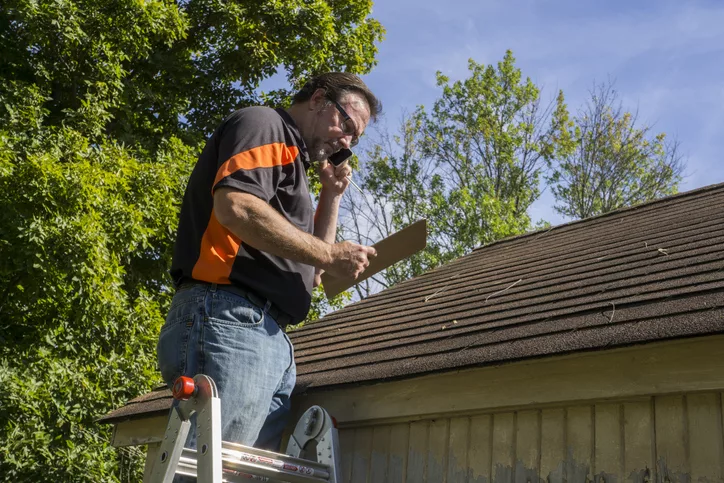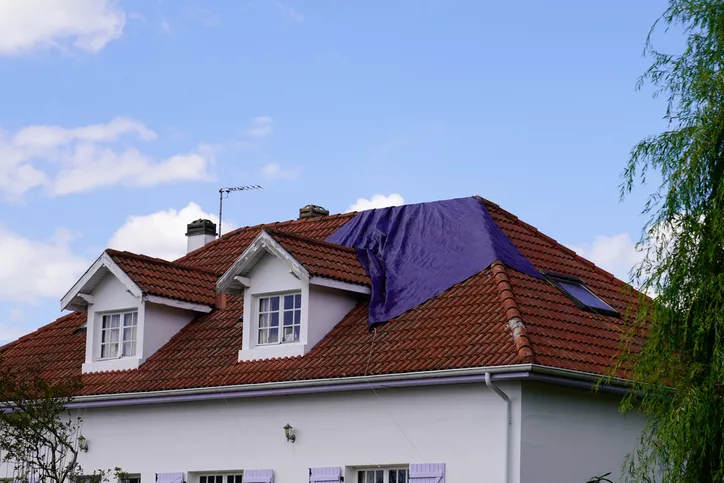Unfortunately for Texans, hail damage is an incredibly common occurrence, particularly areas like the "Hail Alley" region encompassing the San Antonio, Austin, and the Dallas-Fort Worth metroplex. These areas are known for experience frequent thunderstorms and hailstorms which can lead to hail damage, which isn't always obvious to the untrained eye.
Hailstorms can occur anywhere. However, Texas experiences a higher frequency and severity due to its geographical location and weather patterns. Therefore, homeowners in Texas should remain vigilant in recognizing and addressing hail damage promptly to protect their roofs and homes.
The Importance Of Identifying Hail Damage Early
Hail damage can often be subtle and difficult to detect. Factors like the size of the hailstones, the roofing material, and even the pitch of your roof can make it nearly impossible to see the effects of hail and the extent of hail damage to your roof, especially from the ground.
Identifying hail damage early on is crucial for several reasons:
- Timely Repairs: Promptly identifying hail damage allows for timely repairs. Addressing the damage as soon as possible helps prevent further deterioration and potential issues that may arise from a compromised roof. By taking swift action, you can mitigate the risk of water leaks, structural damage, and additional costly repairs down the line.
- Insurance Claims: Many homeowner's insurance policies cover hail damage. However, insurance companies typically require timely reporting of damage and documentation to process a claim. By identifying hail damage early, you can promptly notify your insurance provider, provide necessary evidence, and increase the likelihood of a successful claim. Delaying the identification of damage may complicate the claim process or result in denial of coverage.
- Cost Savings: Addressing hail damage early can lead to significant cost savings. Small issues, such as cracked shingles or minor leaks, can worsen over time and become more extensive problems. By identifying and repairing hail damage promptly, you can prevent the need for more costly repairs or even a full roof replacement in the future. Proactive maintenance is often more cost-effective than dealing with extensive damage caused by delayed repairs.
- Protecting Interior and Belongings: Hail damage to a roof can lead to water infiltration, which poses a risk to the interior of your home and your belongings. Leaks can damage ceilings, walls, insulation, and even electrical systems, leading to further expenses and potential safety and health hazards. Identifying and addressing hail damage early helps preserve the integrity of your home's interior and safeguards your personal property.
- Extending Roof Lifespan: Regular maintenance and timely repairs are key to extending the lifespan of your roof. By identifying and promptly addressing hail damage, you can prevent additional wear and tear on your roof. This proactive approach helps ensure that your roof remains in good condition, minimizing the need for premature replacement and maximizing its lifespan.
Hail Damage Inspection: What To Look For
Before starting any inspection for hail damage, please remember to prioritize safety. Make sure you have a sturdy ladder, wear appropriate footwear, and consider having someone accompany you to provide assistance and ensure you remain safe. If you have any concerns about your own safety, consider hiring a roofer to do a comprehensive roof inspection for you.
Start From The Ground Up
Obviously, your hail damage inspection will start outside the home. Begin by examining the roof from a distance, looking for any visible signs of damage. Note any irregularities in the roofline or noticeable changes in the appearance of the shingles or missing shingles. Walk around the perimeter of your home, inspecting the roof from different angles. Use binoculars to get a closer look at areas that may be harder to reach.

Time To Climb
Once you have done a thorough inspection from the ground, it's time to climb up on the roof and take a closer look. Look for the following signs of damage:
- Cracked or missing shingles: Check for visible cracks, splits, or breaks in the shingles. Look for shingles that may have been completely dislodged or are missing.
- Dents or indentations: Inspect metal components like flashing, vents, and gutters for dents or dimples caused by hail impacts.
- Granule loss: Check for excessive granule accumulation in gutters or downspouts, which could indicate hail damage to the shingles.
- Damaged or displaced roofing accessories: Look for any damage to skylights, chimneys, satellite dishes, or other roof-mounted structures. Keep an eye on flashing to make sure the integrity hasn't been compromised.
Attack The Attic
Once you've inspected your roof from up top, it's time to move it's time to move inside your home to inspect the bottom of your roof from inside the attic. You will be looking for signs of water leaks or damage. Look for water stains on the ceiling, damp spots, or mold growth, as these can indicate compromised roofing due to hail damage. You will also want to inspect the underside of the roof decking for any visible signs of damage, such as cracks, holes, or splintered wood.
What To Do After Inspecting Your Home For Hail Damage
Hopefully your roof made it through the hail storm intact. If not, you need to begin the process of repairing your roof. Start with taking photographs and/or video to document any hail damage that you observe during the inspection. Capture close-up shots that clearly show the extent of the damage. Take notes of exact areas of damage so that you don't forget where anything was.
If any significant damage has occured, you will want to place tarps over any areas where additional damage could occur from rain if another storm came through.
Call your insurance Company

The first thing you'll want to do if you have insurance is to file a hail damage claim as soon as possible since this part can take a while. They will send out an insurance adjuster to give you an estimate on what they will cover for your roof repair.
However, here's a word of warning: don't trust the insurance companies! Remember, insurance companies, like any company, is in business to make money. They often won't include the cost of basic things like obtaining a permit, repairing or replacing the decking under your shingles, or items like gutters and downspouts. This can add up to thousands of dollars that you want to be reimbursed for.
Call a roofing professional
Instead, you should call a roofer on the same day you call your insurance company. A roofer will understand all of the nuances of repairing or replacing a hail damaged roof in your area, and will give you a much more accurate estimate than your insurance company will. Have that estimate ready when the insurance adjuster comes by to show them you are more knowledgeable than the average homeowner and are serious about getting paid what you deserve for your roof repair.
Hail Damage Can Be Serious
In summary, hail damage can cause serious damage to your home even if it's not always obvious. Living anywhere in Texas puts you at risk for hail damage, so knowing what to do and how to respond to a hailstorm is important. Remember that safety is key, both for yourself, your roof, and your belongings. Taking the actions mentioned in this article can help you minimize the damage a hail storm can do to your home be quickly identifying and repairing them, either by yourself or with the help of a professional roofer.
If you've experienced hail damage in the San Antonio, Austin, Dallas, or Fort Worth areas, Kingdom Construction would love to help you. We can perform comprehensive roof inspections, roof repairs, or roof replacements. We've been servicing these areas for over a decade and would be honored to speak with you. Please contact us to let us know how we can help.
